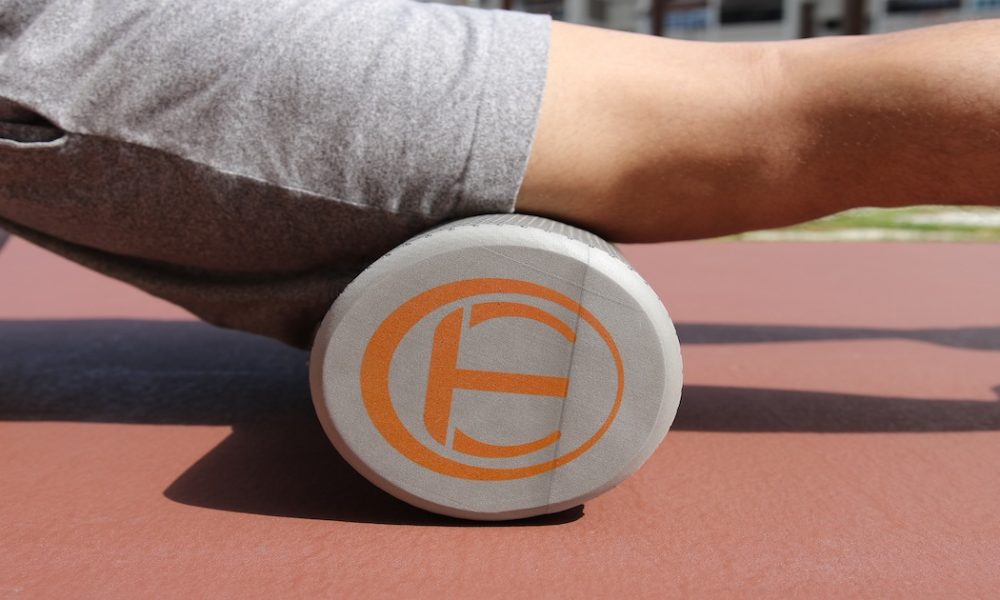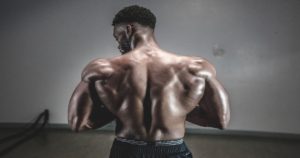
The Foolproof Guide on Healthy Behavior Change
So you want to build muscle, lose 30 pounds of fat, and fit into a size whatever right? That’s cute and all, but intentions alone won’t help you reach your goals.

Foam rolling is one of the most controversial topics within the fitness space. Many trainers and massage therapists hold religiously passionate stances for or against foam rolling. No matter what I say, I’m going to trigger a lot of people.
Oh well, my loss is your gain because I’m about to implore on you everything science says about foam rolling.
There are often two camps of people when it comes to foam rolling.
In the first camp, you’ll have fitness professionals who believe the foam roller and other self-massage tools are the answer to everything. These are the dorks who roll, massage, and smash their bodies until their skin is bruised purple. They’ll pretty much find any excuse to touch themselves for hours with massage tools.
On the other hand, you’ll have another camp of professionals who demonize foam rolling as some useless practice. These are the same losers who feel validated when they post about being too cool for foam rolling despite not having the mobility to reach their toes.
As you can see, the two extremes are probably not ideal, so let’s breakdown what science says about foam rolling, shall we?
Foam rolling is also often called soft tissue therapy or self-myofascial release which are all interchangeable terms. Foam rolling is pretty much just a self-massage. There’s nothing magical about specifically using foam. You can get similar effects with other materials or from the hands of that hot massage therapist in your fantasies.
Foam rolling has many proposed theories on how it works. This is where most of it’s controversy stems from.
Science has put a man on the moon, but unfortunately, can’t definitively explain the exact mechanisms of foam rolling. Pretty lame if you ask me.
From the research papers we do have, here are all the potential mechanisms of how foam rolling could work (1,2).
Some people believe Mechanical mechanisms are involved meaning physical alterations occur through foam rolling. Common mechanical related theories include:
Many people believe foam rolling is purely neurological meaning your nervous system is behind everything with not much physical alterations occurring.
The line of thought is that your brain modulates all the effects when you foam roll by neurologically pulling the brakes off a muscle and allowing it to move smoother. This reduces the sensation of pain and allows your muscles to tolerate greater ranges of motion because your brain no longer sees them as a threat.
Depending who you talk to, some people also think the nervous system releases muscle knots or trigger points while others don’t even believe muscle knots are real.
Other physiological mechanisms are closely tied to neurological mechanisms as well. They refer to the following:
There are also people who believe foam rolling is all in your head. This position explains foam rolling mechanisms through simply perceiving improvements and/or placebo.
The mechanism behind foam rolling is hotly debated daily between professionals. Arguably we know more about how to get people on the moon than foam rolling’s exact mechanisms.
However, I side with the perspective that it is mostly neurological mechanisms, not mechanical (24).
Besides potentially releasing muscle knots, deforming muscle tissue in other ways requires too much force for any human or piece of foam to accomplish (24,33). I mean, just imagine how uselessly fragile human muscles would be if we could manually manipulate them? Sitting all day would flatten all your perky booty gains, but this obviously doesn’t happen.
Many people think pre-workout foam rolling boosts performance because it makes them feel good before training while others think it hurts performance because it makes muscles produce less force.
The research shows neither is true. Foam rolling generally doesn’t help or hurt performance when done before strength training which is when most people do it for performance benefits (1,3,4,5,10).
Some research shows it may slightly improve sprinting, jumping, or agility performance when done prior (1,9,25).
However, other research shows decreased jumping and athletic performance (34,36).
Furthermore, foam rolling does reduce resistance training performance when done between sets regardless if you’re rolling the targeted or opposite muscle (6,7,8).
Overall, It seems like you’re fine to foam roll before training as part of your warm up, but not between sets (37).
Foam rolling does increase joint range of motion and muscle flexibility without hindering performance (1,3,4,5,10,26).
It also seems that longer foam rolling tends to produce greater flexibility improvements, but it doesn’t need to be extremely painful (11,3). So don’t rush the roller, but no need to press your muscles into submission.
Another added bonus is that foam rolling one body part has been shown to improve range of motion in another body part (8). Pretty neat and supports the neurological model of foam rolling. Your nervous system is basically tolerating more range in your limbs.
The big knock against foam rolling is that the flexibility improvements tend to be short term improvements, especially when you compare it to other means like eccentric training which can provide long term improvements (12,13).
Still, there is evidence showing foam rolling can make long term flexibility changes if done more frequently or combined with dynamic exercise (14,15). This is because your body gets used to moving through the new ranges of motion that you’ve unlocked.

You can also enhance the range of motion effects of foam rolling by combining it with stretching (19,20). Research shows, this is best done by foam rolling first, then following up with stretching.
For maximal long term flexibility improvements, the key sequence seems to be foam roll, then stretch (static or dynamic), then strength training (ideally eccentric training).
Foam rolling can also be used as a post workout strategy to reduce soreness (1,16,17,18,25). In one study, a foam rolled limb was about 2.5x less sore than a non-treated limb (27).
However, here’s the interesting thing about foam rolling studies. Despite some considerable effects on feeling less sore and perceiving less fatigue, actual performance recovery is not enchanced (27,28,29).
Only a few studies show slight benefit to recovery of performance makers.
One meta-analysis on this topic using 7 studies showed improved recovery by about 3% in sprints and 4% in strength training (1).
A meta-analysis for massage and recovery showed pretty similar findings except it did show a moderate effect after high intensity mixed training (30).
Shin et al 2015 found a 15 minute massage after exercise induced muscle damage improved strength and proprioception in the lower leg compared to control (31).
Drinkwater et al 2019 found after eccentric leg extensions, foam rolling significantly improved jump performance while other markers were the same between groups (32).
However, the most recent and biggest (29 studies) meta-analysis found sports massage improved sorness and flexibility, but did not improve any measure of performance (34). Massage is often a premium foam roller, so this likely reveals foam rolling essentially makes us feels good, but our recovery is largely unaffected.
To be clear, I’m not saying foam rolling is useless. It still has other benefits and clearly makes you feel good, but the data shows athletic recovery benefits are weak at best and muscle recovery relevant to strength training is non-existent.
Grab my Lifter’s Guide to Managing Stress
Look, sliding on a piece of foam isn’t going to heal all your pain, at least not by itself. Research shows it can help and probably isn’t a bad thing to incorporate along with other therapeutic methods.
Myofascial release has been shown to help with headaches, tennis elbow, and back pain (21,22,23).
One study in particular showed when myofascial release is combined with back specific exercises, back pain was reduced more than just doing the back specific exercises alone (23).
So while it’s not the holy grail of solutions, it’s a great addition to include on top of rehab and strength training.
How foam rolling works is still not definitive, but most of the evidence points towards neurological mechanisms.
But who actually even cares about how it works right? Anyone who’s tried it knows it feels pretty good and fortunately, research shows it has some tangible benefits like improved range of motion.
Foam rolling or self-massage can:
Chaudhry H;Schleip R;Ji Z;Bukiet B;Maney M;Findley T; “Three-Dimensional Mathematical Model for Deformation of Human Fasciae in Manual Therapy.” The Journal of the American Osteopathic Association, U.S. National Library of Medicine, pubmed.ncbi.nlm.nih.gov/18723456/.
Davis, Holly Louisa, et al. “Effect of Sports Massage on Performance and Recovery: a Systematic Review and Meta-Analysis.” BMJ Open Sport & Exercise Medicine, BMJ Specialist Journals, 1 May 2020, bmjopensem.bmj.com/content/6/1/e000614.
Fama, Brian. “The Acute Effect Of Self-Myofascial Release On Lower Extremity Plyometric Performance.” ResearchGate, 2011, www.researchgate.net/publication/254643705_The_Acute_Effect_Of_Self-Myofascial_Release_On_Lower_Extremity_Plyometric_Performance.
sagiroglu, Isa. “Residual Effects of Static Stretching and Self-Myofascial-Release Exercises on Flexibility and Lower Body Explosive Strength in Well-Trained Combat Athletes.” ResearchGate, 2017,
Peacock, Corey A, et al. “An Acute Bout of Self-Myofascial Release in the Form of Foam Rolling Improves Performance Testing.” International Journal of Exercise Science, Berkeley Electronic Press, 1 July 2014, www.ncbi.nlm.nih.gov/pmc/articles/PMC4831860/.
Sign up for AwesomeFitnessScience Weekly. You’ll get juicy insider secrets, updates, and stories.

So you want to build muscle, lose 30 pounds of fat, and fit into a size whatever right? That’s cute and all, but intentions alone won’t help you reach your goals.

Lose Fat While Building Muscle? Dream or Reality? If you’re like most people, you want to grow thicker slabs of hard muscle that attracts the

Let’s take an objective scientific approach to answering the infamous question, are artificial sweeteners really bad for you?